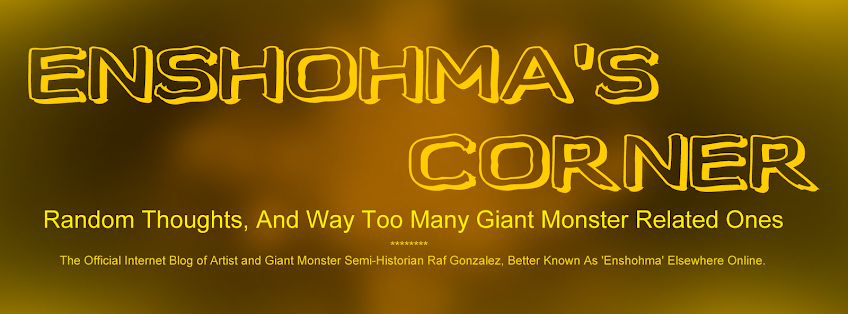But then Anime News Network had to come along, and rain on my parade, by announcing a new series of Japanese-produced Godzilla films, to be produced independently from the Legendary Pictures series.
Now, we had a similar jump-the-gun moment with this same news earlier in the year, so I'm going to wait until more confirmation comes in (UPDATE: It's for real).
And although I’m happy to hear even more Godzilla films coming (along with the Legendary Godzilla sequels, Gamera’s 50th Anniversary, ”Kaiju Gaiden”, "Hail to the King", "Skull Island", "Pacific Rim 2", "Pacific Rim: The Animated Series", "Tremors 5", Liongate’s "Power Rangers", "Attack On Titan", and "Jurassic Park 3"), I’d rather indulge in the Monster Obscurities for now.
So let’s do a Godzilla related one, shall we?
COP OUT! COP OUT! COP OUT! COP OUT!
Giant Shrimp-Looking Thing (as it's flippantly referred to, by one character), made its minor debut in the 2014 graphic novel "Godzilla: Awakening", as one of the lesser-sized mutants to hail from the same wacky age as Godzilla and the MUTOs had.
Unfortunately, the less-than-comprehensive artwork, and pretentious nature of "Godzilla: Awakening", doesn't give this new monster (along with all the other archived beasts at a secret Monarch Museum), any decent exposure.
Though unlike ’The Saber-Toothed Gorilla’ from Dark Horse’s Godzilla comics, Giant Shrimp-Looking Thing does shows up for one more panel. And by doing so, suggests that these prehistoric sea creatures were common prey for larger monsters; like the deadly cell collective dubbed The Shinomura.
| Nom...nom...nom..nom... |
I’d include Oodako to that same list...But considering the secret history of that giant octopus, in-and-out of the main Toho-produced monster movies, one comes to the simple conclusion that...OODAKO IS THE GREATEST MONSTER TO EVER LIVE!!!
But that, dear friends...is a tale for another time.
